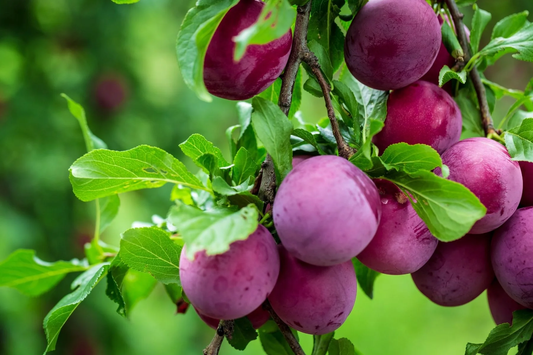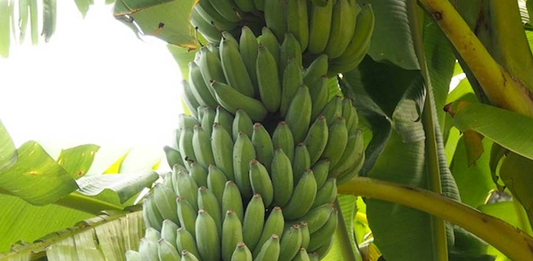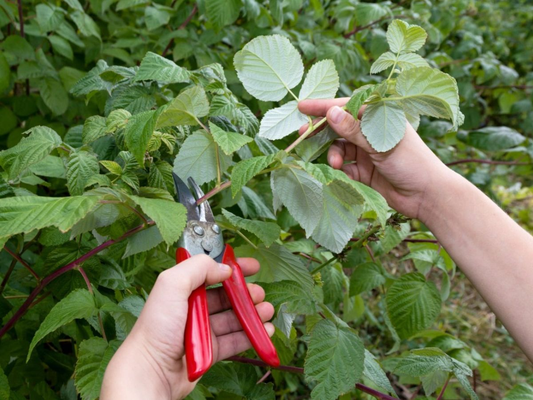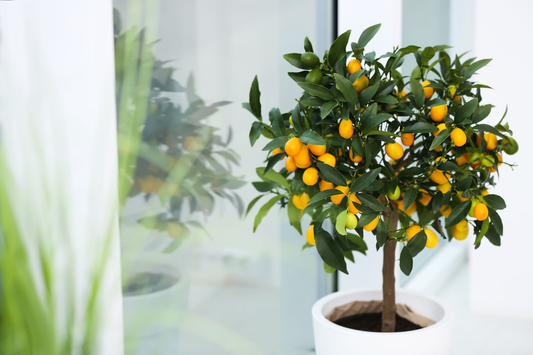Top 10 Best Fruits for Container Gardening You Need to Try
Share
- 1. Introduction
- 2. Why Choose Container Gardening for Fruits?
- 3. Factors to Consider When Choosing Fruits for Containers
- 4. Top 10 Best Fruits for Container Gardening You Need to Try
- 5. Care Tips for Growing Fruits in Containers
- 6. Common Mistakes to Avoid in Container Fruit Gardening
- 7. Harvesting and Enjoying Your Fruit from Containers
- 8. Conclusion
- 9. FAQ – Frequently Asked Questions
1. Introduction
Container gardening has become an increasingly popular way for urban dwellers and gardening enthusiasts alike to cultivate their own fruits and vegetables, even in limited spaces. Whether you have a small balcony, a patio, or even just a sunny windowsill, container gardening offers a practical and accessible solution for growing a wide variety of plants. This method is not only space-efficient but also allows gardeners to have more control over their plants’ environment, making it ideal for those living in cities where traditional garden spaces may be scarce.
When it comes to growing fruits, container gardening offers numerous benefits, especially for individuals who may not have access to large yards or traditional garden plots. The ability to grow fruit trees in pots allows you to:
- Maximize small spaces: Container gardening enables you to grow fruit trees on patios, rooftops, or balconies.
- Maintain better control over soil quality: You can easily customize the soil mix to suit the specific needs of different fruit trees.
- Enhance mobility: Containers allow you to move plants to find the optimal sunlight or protect them from harsh weather conditions.
- Reduce maintenance issues: Containers can help manage water drainage and pests more efficiently.
Choosing the best fruits for container gardening can make a significant difference in the success of your fruit-growing endeavor. By selecting fruit varieties that thrive in pots, you can ensure that your plants grow healthy, productive, and happy. Moreover, growing fruit in containers offers a rewarding experience, as it allows you to enjoy fresh, homegrown produce right at your doorstep. Whether you’re a beginner gardener or an experienced horticulturist, container gardening can transform your small space into a thriving, fruitful garden.
In the following sections, we’ll explore the top 10 best fruits for container gardening and why each of them makes a perfect addition to your garden. With the right care and attention, you can enjoy the satisfaction of growing delicious fruits from the comfort of your home.

2. Why Choose Container Gardening for Fruits?
Container gardening offers numerous advantages over traditional gardening, making it an excellent choice for growing fruits, especially in small or urban spaces. Here are some key reasons why container gardening stands out:
- Mobility: One of the biggest advantages of container gardening is mobility. With plants in containers, you can easily move them around to take advantage of optimal sunlight, protect them from harsh weather, or even relocate them indoors during colder months. This flexibility is something traditional in-ground gardening simply can't offer.
- Space-saving: Container gardening is perfect for individuals with limited outdoor space. You can grow fruit trees on patios, balconies, or even window sills. Even in apartments, container gardening can turn a small, underutilized space into a productive garden.
- Control over soil quality: In traditional gardening, the quality of the soil can vary greatly, depending on the location. With container gardening, you can create the perfect soil mixture for each fruit variety, ensuring that your plants get exactly what they need to thrive. This helps avoid issues like poor drainage or compacted soil, which can hinder plant growth.
Container gardening also offers flexibility in terms of climate and environmental conditions. By choosing the right varieties of fruit trees, gardeners can grow fruits even in regions that may not be suitable for traditional outdoor gardening:
- Climate adaptability: Container gardening allows you to bring plants indoors during extreme weather conditions. If your area experiences harsh winters or extremely hot summers, you can move your container plants to sheltered locations or indoors to extend the growing season.
- Environment control: You can modify watering, light exposure, and temperature based on the fruit plant's needs, creating an ideal growing environment regardless of the weather outside.
Another significant benefit of container gardening is the ease of managing pests and diseases. In containers, it’s easier to monitor your plants closely and take action at the first signs of trouble. Unlike traditional gardening, where pests and diseases can quickly spread through the soil, containers provide a controlled environment that minimizes the risk of widespread issues. This means less need for harsh chemicals, making container gardening a more eco-friendly and sustainable option for growing fruits.
3. Factors to Consider When Choosing Fruits for Containers
Choosing the right fruit trees for container gardening requires considering several important factors to ensure that your plants thrive. Below are the key aspects to keep in mind:
-
Size of the container: The size of the container plays a crucial role in determining how well your fruit tree will grow. Different fruit trees require different pot sizes. Generally:
- Small fruit trees like strawberries or dwarf varieties of citrus can thrive in containers as small as 12-16 inches in diameter.
- Medium-sized trees like blueberries or fig trees will need containers that are at least 18-24 inches wide.
- Larger trees, such as apple or peach trees, may require containers up to 36 inches in diameter or more to accommodate their root systems.
-
Light and temperature requirements: Different fruit varieties have varying needs when it comes to sunlight and temperature. Most fruit trees require full sun, ideally around 6-8 hours per day, but it’s important to match the tree to your local climate.
- If you live in a cooler climate, choose hardy fruit trees like apples or cherries that can tolerate lower temperatures.
- In warmer regions, you can grow subtropical fruits like citrus or figs, which thrive in heat.
-
Pollination: Pollination is another key factor to consider when selecting fruits for container gardening. Some fruit trees are self-pollinating, while others require cross-pollination with other trees of the same species. For example:
- Self-pollinating fruit trees like certain types of dwarf apples and peaches do not require another tree to produce fruit.
- Cross-pollinating trees, such as pears and cherries, will need at least one other compatible tree nearby for successful fruit production.
-
Drainage and soil requirements: Proper drainage is essential to prevent root rot in container plants. Ensure your containers have adequate drainage holes and use well-draining potting mix that allows water to flow through while holding enough moisture for your fruit tree.
- Fruit trees like blueberries prefer acidic soil, while most others thrive in slightly acidic to neutral soil.
- Consider adding organic compost or well-rotted manure to improve soil fertility and structure.

4. Top 10 Best Fruits for Container Gardening You Need to Try
Container gardening opens up a world of possibilities when it comes to growing fruits, especially if you have limited space or live in an urban setting. Below is a list of the top 10 best fruits for container gardening, each with detailed growing conditions, pros and cons, and varieties that thrive in pots.
4.1. Strawberries
Description: Strawberries are one of the easiest and most rewarding fruits to grow in containers. Varieties like 'Alpine' and 'Ever-bearing' are perfect for pot cultivation.
- Growing conditions: Strawberries require full sun (6–8 hours a day), well-drained, slightly acidic soil, and moderate watering.
- Temperature: Ideal temperature is between 60°F to 80°F (15°C to 27°C).
| Varieties | Type | Pros | Cons |
|---|---|---|---|
| June-bearing | Produces fruit in early summer | Large, sweet fruit | One harvest per year |
| Ever-bearing | Produces fruit multiple times per season | Continuous harvest | Smaller fruit size |
4.2. Dwarf Citrus Trees
Description: Dwarf citrus trees like lemon, lime, and orange are great for containers. Popular varieties include 'Improved Meyer Lemon' and 'Calamondin Orange.'
- Growing conditions: Citrus trees need full sun (8–12 hours per day), slightly acidic soil, and regular watering.
- Temperature: Ideal temperature for citrus is 55°F to 85°F (13°C to 29°C), and they should be protected from frost.
| Varieties | Sunlight Needs | Pros | Cons |
|---|---|---|---|
| Improved Meyer Lemon | Full sun | Sweet fruit, small size | Needs protection from frost |
| Calamondin Orange | Full sun | Compact size, ornamental | More sour than sweet |
4.3. Apples
Description: Dwarf apple trees such as 'Fuji' and 'Granny Smith' are perfect for container gardening and produce fruit in small spaces.
- Growing conditions: Apple trees require full sun (6-8 hours daily) and fertile, well-drained soil.
- Pollination: Most apple varieties need cross-pollination to bear fruit, so consider planting two compatible varieties.
| Varieties | Pollination | Pros | Cons |
|---|---|---|---|
| Fuji | Cross-pollinating | Sweet, crisp flavor | Requires other apple varieties for pollination |
| Granny Smith | Cross-pollinating | Tart flavor, great for baking | Requires other apple varieties for pollination |
4.4. Figs
Description: Figs like 'Petite Negra' and 'Black Mission' are excellent container fruits due to their compact size and sweet fruit.
- Growing conditions: Figs need full sun (6-8 hours per day), well-drained soil, and moderate watering.
- Temperature: Figs thrive in warm temperatures between 75°F to 85°F (24°C to 29°C).
| Varieties | Climate | Pros | Cons |
|---|---|---|---|
| Petite Negra | Warm, sunny climates | Compact, delicious fruit | Requires hot, dry conditions |
| Black Mission | Warm, sunny climates | Rich flavor | Needs regular pruning |

4.5. Blueberries
Description: Varieties such as 'Top Hat' and 'Sunshine Blue' are well-suited for container growth, providing delicious fruit in a small space.
- Growing conditions: Blueberries need acidic, well-drained soil and full sun (6-8 hours a day).
- Watering: They prefer consistent moisture but should not sit in waterlogged soil.
| Varieties | Season | Pros | Cons |
|---|---|---|---|
| Top Hat | Early-season | Compact size, hardy | Requires acidic soil |
| Sunshine Blue | Mid-season | Compact size, ornamental | Needs regular watering |
4.6. Raspberries
Description: Varieties like 'Heritage' and 'Autumn Bliss' perform well in containers, offering sweet berries in small spaces.
- Growing conditions: Raspberries need full sun (6-8 hours) and well-drained, slightly acidic soil.
- Pruning: Regular pruning is necessary to maintain healthy, productive plants.
| Varieties | Season | Pros | Cons |
|---|---|---|---|
| Heritage | Summer/Fall | Sweet, prolific | Needs pruning |
| Autumn Bliss | Fall | Sweet, hardy | Less heat-tolerant |
4.7. Grapes
Description: Compact grape varieties like 'Pixie Grape' and 'Compact Red' are ideal for container growing.
- Growing conditions: Grapes require full sun (6-8 hours per day) and well-drained, fertile soil.
- Watering: Grapevines need moderate watering but dislike waterlogged soil.
| Varieties | Seedless | Pros | Cons |
|---|---|---|---|
| Pixie Grape | Seedless | Compact, easy to manage | Requires regular pruning |
| Compact Red | Seedless | High yield | Needs moderate watering |
4.8. Pears
Description: Pear trees such as 'Bartlett' and 'Pineapple Pear' are ideal for growing in containers, producing juicy fruit in limited space.
- Growing conditions: Pear trees need full sun (6-8 hours), well-drained, fertile soil, and regular watering.
- Pollination: Most varieties require cross-pollination for optimal fruiting.
| Varieties | Pollination | Pros | Cons |
|---|---|---|---|
| Bartlett | Cross-pollinating | Juicy, sweet flavor | Requires other pear varieties |
| Pineapple Pear | Cross-pollinating | Fruity flavor, compact size | Requires other pear varieties |
4.9. Peaches
Description: Peach varieties such as 'Bonanza' and 'Pix Zee' are great choices for container gardening.
- Growing conditions: Peaches need full sun (6-8 hours) and well-drained, fertile soil.
- Pruning: Regular pruning helps maintain tree size and improve fruit production.
| Varieties | Sunlight | Pros | Cons |
|---|---|---|---|
| Bonanza | Full sun | Compact, sweet fruit | Needs regular pruning |
| Pix Zee | Full sun | Compact, hardy | Requires thinning |
4.10. Cherries
Description: Dwarf cherry trees like 'Balcony' and 'Compact Stella' are ideal for containers, producing sweet cherries in small spaces.
- Growing conditions: Cherries need full sun (6-8 hours), fertile, well-drained soil, and regular watering.
- Pollination: Some cherry varieties require pollinators, while others are self-pollinating.
| Varieties | Pollination | Pros | Cons |
|---|---|---|---|
| Balcony | Self-pollinating | Compact, sweet fruit | Needs regular care |
| Compact Stella | Self-pollinating | Sweet cherries, hardy | Needs protection from pests |

5. Care Tips for Growing Fruits in Containers
Growing fruit trees in containers can be highly rewarding, but they do require some special care to thrive. Here are some key tips for keeping your container fruits healthy and productive:
Container choice:
Choosing the right-sized container is crucial for fruit trees to grow and produce fruit. A container that is too small will limit root growth, while one that is too large can lead to water retention issues. For most fruit trees, a container that is at least 18-24 inches in diameter and 18-24 inches deep is ideal. Ensure that the pot has good drainage holes to prevent root rot.
Soil and fertilizer:
Use a well-draining potting mix that is rich in organic matter, such as a mix designed for fruit trees or vegetables. Avoid regular garden soil, as it can become too compact in containers. Fertilizing is key to healthy fruit production. Use a balanced, slow-release fertilizer with equal parts nitrogen, phosphorus, and potassium (NPK) to encourage steady growth. Feed the tree every 4-6 weeks during the growing season to provide essential nutrients.
Watering:
Proper watering is essential for container-grown fruit trees. Water them thoroughly when the top inch of soil feels dry, ensuring that the water drains out from the bottom of the container. Be mindful of root rot, which can occur if the container doesn't drain well or if the tree is overwatered. Use a saucer to catch excess water but empty it regularly to avoid stagnant water.
Pruning and shaping:
Pruning is necessary to keep your fruit tree compact and productive. Remove any dead, diseased, or crossing branches to maintain airflow and sunlight exposure. Regularly shape the tree by trimming back excessive growth and removing suckers. This encourages better fruit production and helps the tree stay manageable in a container.
Winter care:
In colder climates, protect container fruit trees during the winter months. Move them to a sheltered location, such as a garage or shed, to prevent frost damage. If that’s not possible, insulate the pot with burlap or wrap it in foam to shield the roots. Water sparingly during winter to prevent the roots from freezing.
6. Common Mistakes to Avoid in Container Fruit Gardening
While container fruit gardening can be incredibly rewarding, there are several common mistakes that can hinder the growth and productivity of your trees. Avoiding these mistakes will help you ensure your fruit trees thrive in their containers.
Overwatering and poor drainage:
One of the most common mistakes in container fruit gardening is overwatering. Containers can easily become waterlogged, leading to root rot. Make sure your container has drainage holes, and always check the soil moisture before watering. Allow the top inch of soil to dry out before giving your tree more water. A well-draining potting mix is essential for preventing water retention.
Choosing the wrong fruit variety for container growth:
Not all fruit trees are suitable for container growth. It's important to choose dwarf or compact varieties that are bred to thrive in smaller spaces. Standard fruit tree varieties often grow too large for containers and will struggle to thrive. Research the specific varieties that are best suited for container gardening before planting.
Inadequate sunlight and poor placement:
Fruit trees require plenty of sunlight to produce fruit. Placing your container trees in a shady spot can result in weak growth and poor fruit production. Ensure that your trees receive at least 6-8 hours of direct sunlight per day. If you’re growing them indoors, make sure they’re near a sunny window or use grow lights to supplement natural sunlight.
Not pruning or maintaining the trees regularly:
Pruning is an essential part of maintaining a healthy fruit tree. Regularly remove dead, diseased, or overcrowded branches to encourage better airflow and fruit production. Neglecting to prune or maintain your container trees can lead to poor growth and reduced fruit yield.

7. Harvesting and Enjoying Your Fruit from Containers
Knowing when to collect your produce is key to enjoying the best flavors and textures. Here are some tips for ensuring you get the most from your container-grown plants:
Signs Your Produce is Ready:
Each type of plant will show clear signs when it's time to pick. For many fruits, changes in color are the most noticeable indicator. You may also notice the texture softening, or a sweet fragrance emerging as they ripen. Check for these cues to avoid picking too early or too late.
Collecting Produce Without Damage:
Handle the plant gently to avoid breaking branches or damaging the roots. Use a pair of sharp pruning shears or scissors to cut the produce from the plant rather than pulling it off, which could cause stress. For larger plants, support the branches when collecting to prevent them from snapping under the weight of the produce.
Storing or Preserving Your Bounty:
After collecting, store your produce properly to extend its shelf life. Some fruits can be kept at room temperature until fully ripened, while others may need refrigeration. Consider freezing, drying, or canning if you have a larger yield that you can’t consume immediately. This allows you to enjoy your fresh produce long after it’s picked.
8. Conclusion
Container gardening makes growing fruit accessible to everyone, regardless of space or experience. Whether you have a small balcony, a patio, or even just a windowsill, you can enjoy fresh, homegrown produce with minimal effort. By choosing the right fruit varieties and providing the proper care, you can create a thriving mini orchard in your own home.
Don’t be intimidated—give container fruit gardening a try! The rewards are plentiful, from the joy of watching your trees grow to the satisfaction of enjoying your own homegrown produce. With the right care, container gardening can offer a fruitful and fulfilling gardening experience.
Ready to start? Visit Xroci.com for the best quality plants and gardening supplies to help you on your journey to successful container fruit gardening!
9. FAQ – Frequently Asked Questions
9.1. Can I grow fruit trees in small containers?
Yes, small containers can work for certain dwarf fruit varieties that have compact growth habits. Dwarf fruit trees, such as mini citrus or dwarf apples, are ideal for small containers because they require less space for their roots to spread. When choosing a container, ensure it has adequate drainage and is large enough to allow the tree to grow for a few years before needing a larger pot. As the tree grows, you may need to upgrade to a slightly larger container to maintain healthy root development.
9.2. What are the best container sizes for fruit trees?
Container size depends on the size and type of the fruit tree. For dwarf fruit trees, containers that are at least 12-18 inches in diameter and 12-16 inches deep are sufficient. For larger varieties, aim for containers that are at least 24 inches in diameter and 20 inches deep. The container should be large enough to accommodate the root ball, with some room for growth. Always choose a container with drainage holes to prevent waterlogging.
9.3. How do I manage pests in container-grown fruit trees?
Managing pests in container gardening is easier because the plants are confined to a smaller area. Start by inspecting your trees regularly for signs of pests like aphids, spider mites, or scale. Natural pest control methods, such as introducing beneficial insects (e.g., ladybugs or predatory mites), using insecticidal soap, or applying neem oil, can help manage infestations. You can also maintain healthy plants by removing damaged leaves and ensuring the tree gets the proper nutrients.
9.4. Can I grow fruit trees indoors in containers?
Yes, growing fruit trees indoors in containers is possible but comes with some challenges. Indoor fruit trees require plenty of light, so place them near a south-facing window or use grow lights to supplement natural light. They also need consistent humidity, so consider placing a humidifier nearby or misting the leaves regularly. Keep in mind that some fruit trees require cross-pollination, so you may need more than one tree or hand-pollinate the flowers.
9.5. How often should I fertilize my container fruit trees?
Fertilizing container-grown fruit trees is essential because nutrients leach out of the soil more quickly than in ground planting. Generally, fertilize during the growing season (spring to early summer) every 4-6 weeks. Use a balanced, slow-release fertilizer or a liquid fertilizer designed for fruit trees. Be sure not to over-fertilize, as this can harm the plant. Always follow the instructions on the fertilizer package for the best results.
Additional Resources
Best Low-Maintenance Houseplants for Stress-Free Gardening – XRoci
How to Grow Okra from Seeds: A Quick Guide for Home Gardeners – XRoci
How to Care for Seasonal Plants: A Gardener’s Cheat Sheet – XRoci




